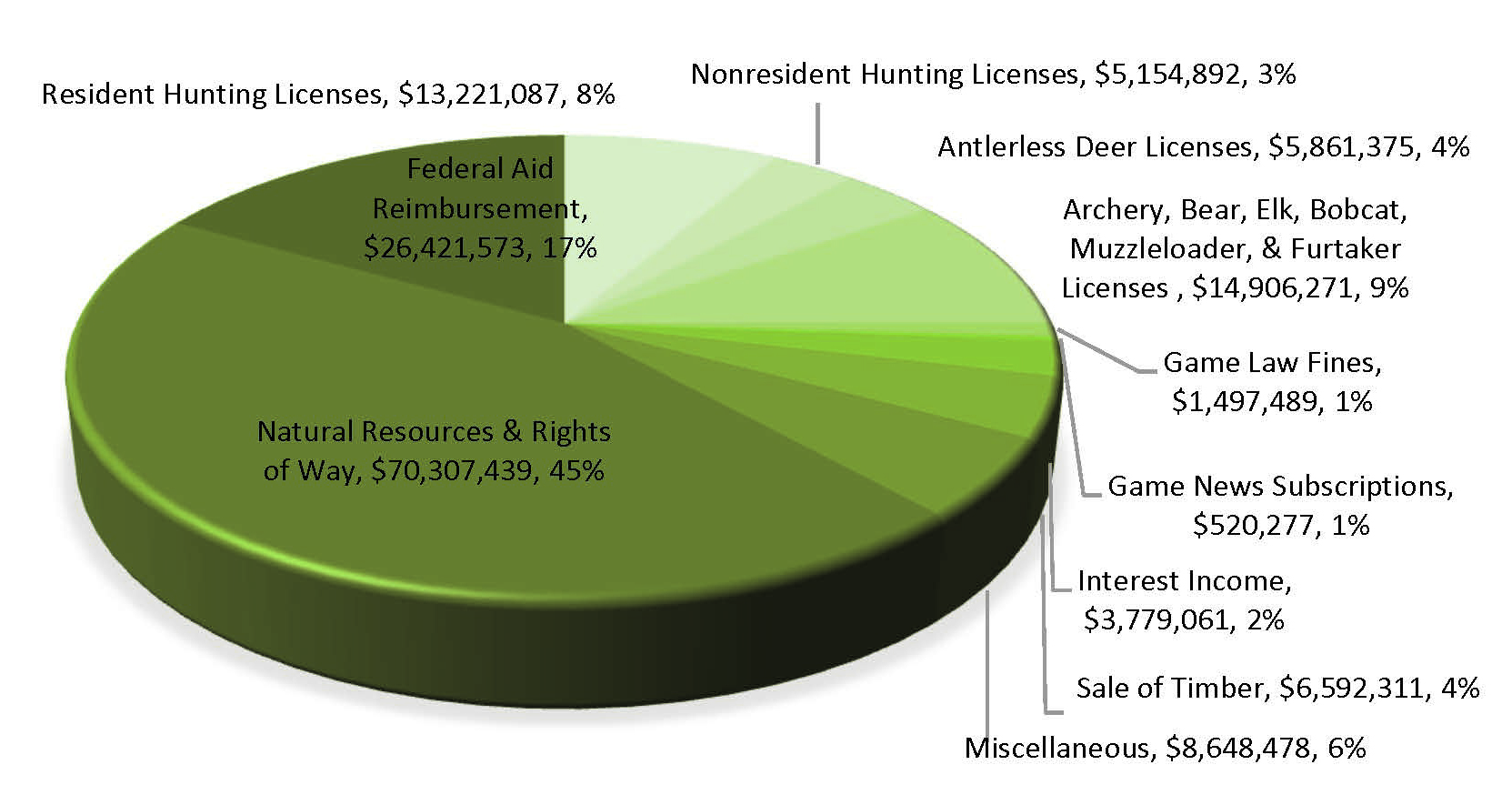This content was prepared using the modified accrual basis of accounting. Revenues are reported when they become measurable and available to finance expenditures of the current period. Expenditures are recognized when they will be paid with current financial resources.
Total revenues were $156,910,253, a decrease of $33,019,318 (17.4%) from the prior year’s $189,929,571. Included in the prior fiscal year were revenue and expenditures from escrow accounts that were associated with acquired land transactions, which were not included in prior period financial statement reports.
There was an increase in revenues from gas and oil lease royalties of $10,630,411 as a result of favorable market conditions and new gas and oil wells. Adult nonresident hunting licenses also increased slightly, up $264,507 or 5.7%. Revenue from adult resident hunting licenses decreased $103,680. Sales from the Federal Duck Stamp (eDuck), which allows residents and nonresidents to hunt migratory birds, continued to grow. Sales totaled $647,793—a 3.9% increase.
Total expenditures were $130,977,370. This represents a decrease of $43,062,580 (24.7%) from the prior year’s expenditures of $174,039,950. The majority of the decrease can be attributed to the prior year’s acquired land transactions, which increased prior year expenses. There was an increase in legal and specialized services expenditures of $3,597,772, attributable to the Game Commission’s initiative for State Game Lands road maintenance and habitat restoration projects.
The Game Fund’s Restricted Fund Balance was $114,599,006 at the fiscal year end. This represents an increase of $25,932,883 or 29.2% from the prior year-end balance. The increase is mainly attributable to both an initiative with the Department of General Services for the Game Commission’s capital building project fund and a change in the reporting of State Game Lands escrow accounts.
The Game Code stipulates that a minimum of $4.25 from each resident and nonresident license, and a minimum of $2.00 from each antlerless deer license issued for which the full fee has been paid, is to be used for habitat improvement, development, maintenance, protection, and restoration. The Game Commission reported that during fiscal year 2019-20, the number of resident and nonresident licenses sold totaled 1,470,912, and the number of antlerless deer licenses sold totaled 875,909. This mandated that a minimum of $8,003,194 be expended and appropriated into a separate restricted account for the above-mentioned habitat improvement provision. Actually $11,675,112 was expended. A $3,194 deficit amount will be added to the appropriations request for the 2020-21 fiscal year.
Revenues — $156,910,253
Expenditures — $130,977,370